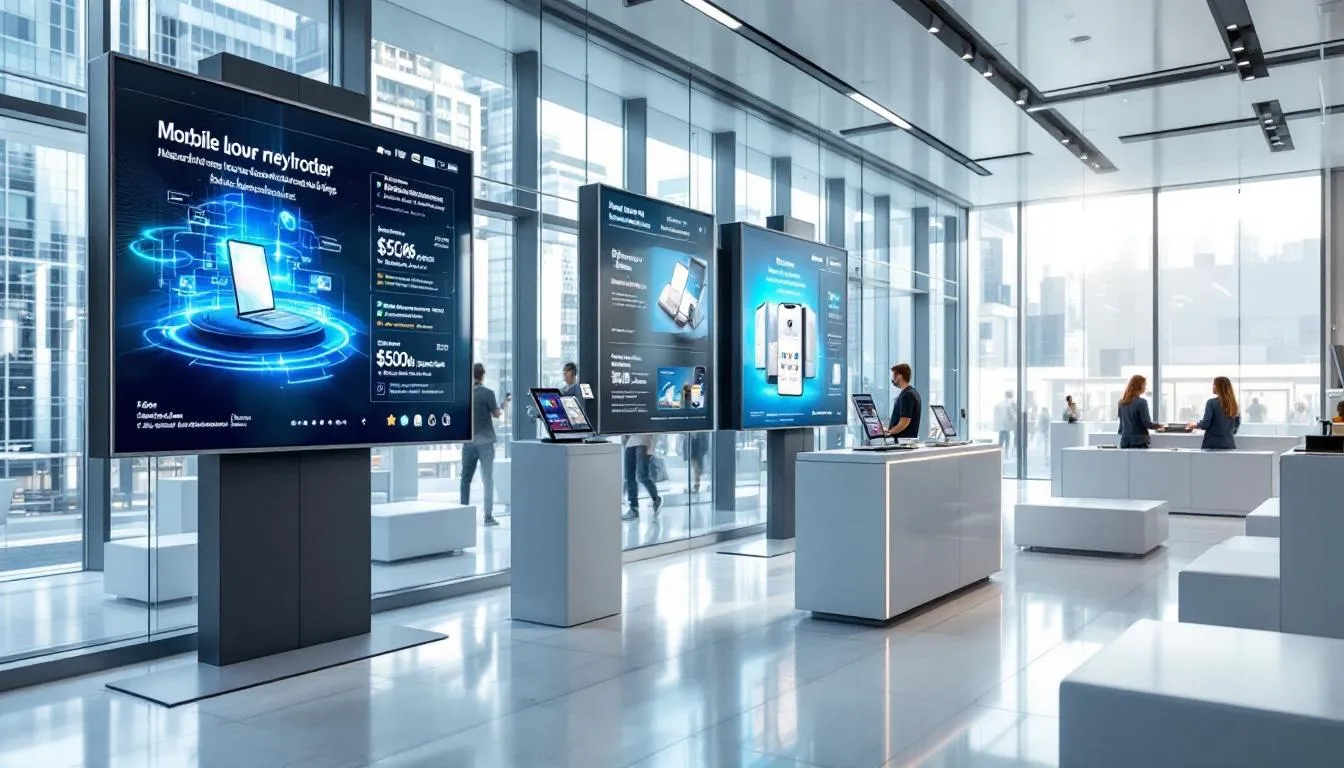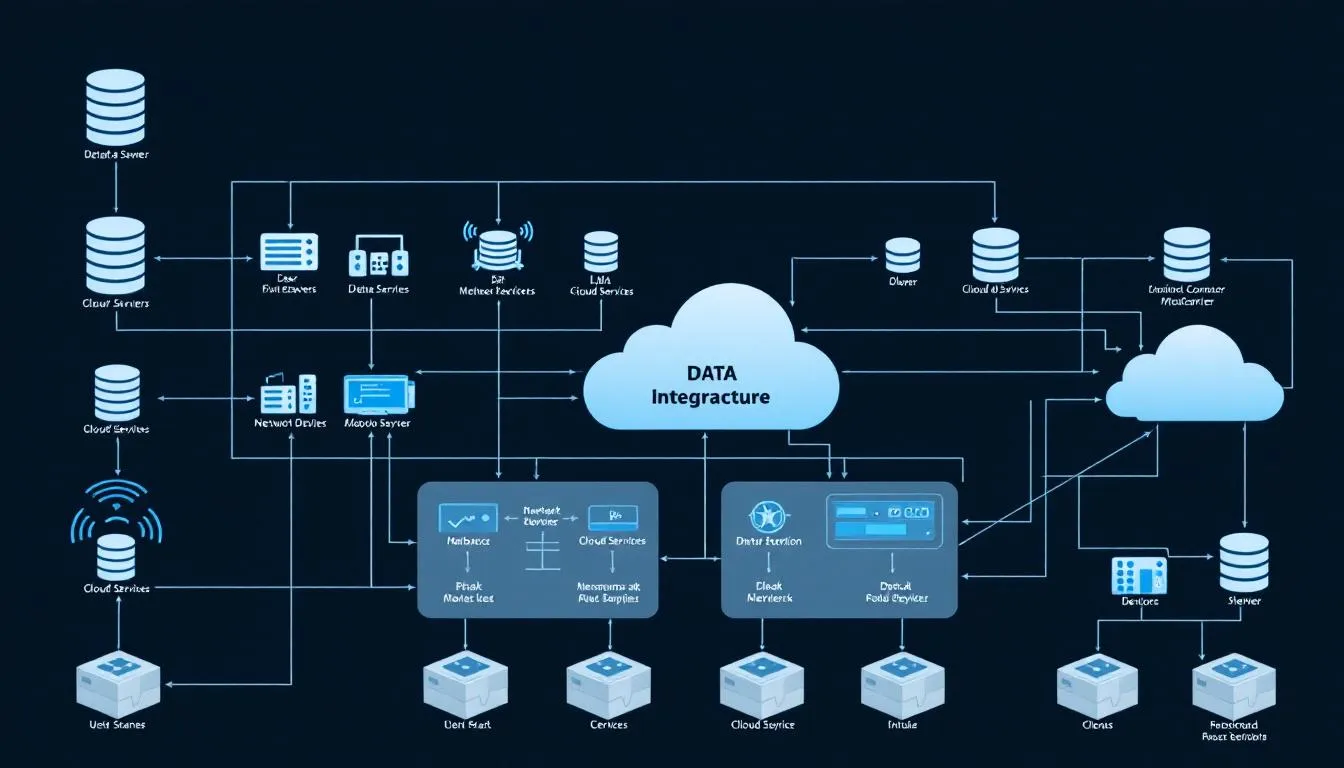Omnichannel: more than being present on all channels

Omnichannel is a strategy where all customer channels for both online and offline, working together seamlessly. The goal: to always give customers the same consistent brand experience regardless of which channel they interact through.
Many companies think omnichannel simply means being active across all possible channels. But in reality, it’s about much more: it’s about creating a seamless customer experience across all touch points. Whether a customer interacts with your brand through your website, social media, email or in the physical store, the message, tone of voice and brand experience must be consistent and recognizable. This requires a well thought-out brand strategy in which brand positioning, brand proposition and branding processes are central.
Omnichannel marketing is an integrated approach where all marketing channels are aligned to provide a consistent brand experience that perfectly matches the stage of the customer journey. This can take place both online and offline and requires a sharp content strategy, creative concept development and the use of content formats that fit each channel and touchpoint. For example, consider a customer who sees a social ad, clicks through to a conversion-oriented landing page and then receives a personalized email. Or a store associate who has instant insight into what the customer has viewed or purchased online through the CRM system.
A successful omnichannel strategy starts with mapping the customer journey and conducting audience research and persona mapping. Integrating systems such as CRM, email marketing and Web analytics ensures that data flows between channels, which is crucial for personalization and retention profiles. UX and UI design, including mobile first design and accessibility UX, play an important role in optimizing user flow and conversion-oriented design.
The benefits of omnichannel include a consistent brand identity that builds trust, higher customer loyalty through relevant communication and better measurability of which channels and messages actually drive conversion. It is therefore essential to continuously measure and optimize with tools such as dashboarding, conversion tracking and A/B testing.
Beware of pitfalls, however: deploying too many channels at once without focus, inconsistency in message or design and lack of clear KPIs for each phase of the customer journey can undermine your strategy.
In short, omnichannel is not a gimmick, but a strategic approach in which brand development, technology and content creation come together in a full-funnel approach. Companies that get this right turn separate channels into one strong, connected brand story that stands out through clear proposition development, storytelling and a consistent visual identity.
Key insights about Omnichannel you need to know
Here are the key points that will give you a clear picture of what omnichannel really means and why it matters:
- Omnichannel integrates all communication and sales channels for a consistent customer experience
- Companies with an omnichannel strategy retain 89% of their customers versus 39% on average
- The difference with multichannel lies in the complete integration around the customer rather than separate channels
- Digital transformation made omnichannel essential for retail
- Implementation requires organizational changes and central CRM system
If you have a strong omnichannel strategy, you retain significantly more customers than companies with weaker strategies. This statistic shows how powerful a well-implemented omnichannel approach is in modern retail and services.
In recent years, you as a consumer have changed your expectations dramatically. You now expect a seamless customer experience regardless of the channel you use to interact with a company. Whether you start on social media, continue through an online store, and end up in a physical store – the customer journey must be consistent and integrated.
In this complete guide, you’ll discover everything you need to know about omnichannel strategies. From the fundamental differences with multichannel retail to practical implementation steps, trends and common challenges. After reading this article, you will be fully equipped to develop and implement your own omnichannel strategy.

What is omnichannel?
Omnichannel represents a transformational strategy in marketing, retail and operations, focused on providing a seamless, integrated brand experience across all consumer touchpoints, both digital and physical. The core goal is to blur the lines between different channels so that your customer journey is uninterrupted, consistent and customized, no matter where or how the interaction begins or ends.
The omnichannel approach integrates all the channels your organization uses to interact with consumers, creating a unified and convenient user experience. This includes:
- Physical channels: Physical stores, events, pop-up stores, kiosks
- Digital channels: Websites, mobile apps, e mail, text messaging, social media, online marketplaces
- Customer service: phone centers, chatbots, live chat agents
- Hybrid contact points: Buy Online Pick-up In Store (BOPIS), curbside pickup, online returns in physical store
The omnichannel model goes beyond just being present on multiple channels by ensuring consistency in messaging, data integration and a frictionless customer journey across all touchpoints. This is often summarized as creating a 360-degree customer experience.
The evolution from single-channel to multichannel and ultimately to omnichannel has been driven by changing consumer expectations for flexibility, convenience and personalization. The shift to omnichannel accelerated significantly with the rise of smartphone usage, the growth of e-commerce and technologies such as cloud-based customer relationship management systems.
Multichannel vs omnichannel: the difference
The fundamental difference between multichannel retail and omnichannel lies in the degree of integration and customer focus. With multichannel, you as a company have multiple channels such as a website and physical stores, but these are often managed independently of each other. This leads to fragmented and inconsistent experiences for consumers.
Concrete multichannel problems you may experience as a consumer:
- Different prices between online and offline outlets
- Different return conditions by channel
- No ability to return online purchases in physical store
- Separate loyalty programs by channel
- Different product availability between channels
Omnichannel example of integrated experience:
You see an ad on social media, visit the online store on your smartphone during lunch, add products to your wish list, later receive a personalized e mail with a discount, visit the physical store where service staff can see your online behavior, try on the product in the store, and finally buy it online with free home delivery.
The main distinction lies in customer focus vs product focus. Multichannel vs omnichannel shows that omnichannel companies build their entire organization around you as a customer, while multichannel companies are often still organized around channels or products.
This approach has a direct impact on your customer experience and customer satisfaction. Research shows that 73% of buyers use multiple channels to research, compare and make purchases. Companies that seamlessly facilitate this customer journey see significantly higher loyalty and engagement.

The benefits of omnichannel
Implementing an omnichannel strategy brings measurable benefits that feed directly into your bottom line. Research shows that omnichannel customers tend to be the most profitable and loyal segment for retailers and service providers.
Concrete numbers and statistics on ROI:
- Companies with strong omnichannel engagement retain 89% of their customers versus 33% with weak strategies
- Omnichannel shoppers spend on average 4% more in-store and 10% more online
- 86% of consumers are willing to pay more for a complete, integrated shopping experience
- Companies with omnichannel strategies see 91% higher customer retention
Increased customer loyalty and retention
The 89% customer retention of companies with strong omnichannel strategies versus the 39% industry average illustrates the powerful impact on customer loyalty. This increased loyalty results from the personalized customer journey made possible by data integration of all touchpoints.
A consistent brand experience across all channels significantly increases Net Promoter Score. You as a customer who has a seamless experience between digital solutions and physical locations develop stronger emotional connections to the brand. This connection leads to higher customer satisfaction and more positive word of mouth.
Dutch companies success stories:
Several Dutch retailers have achieved proven success with omnichannel implementations. They integrate their online store with physical stores, offer BOPIS services, and create a single platform where you can manage your entire purchase history and preferences. This consistent experience results in higher repeat purchases and cross-selling opportunities.
Higher conversions and revenue growth
Omnichannel strategies generate demonstrably higher conversions through the seamless integration of different channels. You as a customer using multiple channels have a 35% higher order value, especially in Buy Online Pick-up In Store (BOPIS) scenarios where you buy additional products during pick-up.
The 10% higher spending by omnichannel customers online and 4% more in physical stores show the direct impact on revenue growth. These increases come from the improved customer journey where you can more easily switch between channels during your purchase process.
Impact on cross-selling and upselling:
Unified customer data allows service agents to make personalized recommendations based on previous purchases across all channels. This increases cross-selling effectiveness by 20-30% compared to traditional approaches. The ability to introduce new products through the right channel at the right time in the customer journey maximizes conversion opportunities.
Improved operational efficiency
Centralized data management eliminates duplication between departments and reduces operational costs. By integrating customer data, inventory and communication channels on a single platform, you can use resources more efficiently and respond faster to changing customer needs.
AI support for service agents increases productivity through access to complete customer history and personalized interaction suggestions. This results in faster problem resolution and higher first-call resolution rates. At the same time, routine tasks can be automated, allowing employees to focus on more complex customer interactions that add more value.
The elimination of organizational silos through omnichannel implementation improves collaboration between marketing, sales and customer service teams. This cross-functional collaboration leads to more consistent communication and faster implementation of new products and services across all channels.

Implementation of omnichannel strategy
Successfully implementing an omnichannel strategy requires a systematic approach with clear objectives, adequate technology and organizational changes. The process can take 12-18 months, depending on the complexity of existing systems and the scope of the implementation.
Effective implementation begins with collecting customer data and mapping the current customer journey. Next, your organization must invest in the right technology to integrate all channels, followed by modifying processes and training employees.
Step 1: goal setting and customer research
Setting SMART objectives is the foundation for successful omnichannel implementation. These objectives should be specific, measurable, acceptable, realistic and time-bound. Examples of effective objectives include:
- Increase customer retention by 25% within 12 months
- Increase average order value by 15% through cross-channel interactions
- Reduce customer service response time by 40%
- Achieve 90% customer satisfaction score across all channels
Customer journey mapping and touchpoint analysis:
Mapping all touch points helps you understand where customers interact with the brand and where improvements can be made. This analysis should include all possible channels, from social media and e mail to physical stores and customer service.
Examining customer personas and channel preferences provides insight into how different customer segments prefer specific communication channels. This knowledge helps prioritize investments in the right channels for your target audience.
The evaluation of current multichannel activities reveals gaps and inconsistencies in the existing customer experience. This analysis forms the baseline for measuring improvements after omnichannel implementation.
Step 2: set up technical infrastructure
A central customer relationship management system is the foundation of any omnichannel strategy. This system must enable real-time synchronization of customer data, inventory, pricing and promotions across all channels. You cannot deliver a consistent experience without this technical foundation.
Integrating point-of-sale systems, Web store, mobile apps and social media requires sophisticated API links and middleware. This technical integration ensures that customers can seamlessly switch between channels without losing information or repeating steps.
Data synchronization between all channels:
Real-time data synchronization is critical to delivering accurate information about product availability, pricing and promotions. Customers expect this information to be consistent regardless of the channel they use. Inconsistencies lead to frustration and lost sales.
A mobile-first approach ensures responsive design and optimal user experience on smartphones and tablets. Given increasing mobile usage, this is essential for achieving omnichannel goals. Mobile apps can act as a central hub for customer interactions and data collection.
Step 3: adjust organization and processes
Forming cross-functional teams that include sales, marketing and service breaks down traditional silos and promotes collaboration. These teams should be responsible for the complete customer journey rather than individual channels, leading to more coordinated customer experiences.
Developing employee skills:
Omnichannel implementation requires new skills from service employees. They must be able to work with integrated systems, interpret customer data from different channels, and deliver personalized service. Investment in training and development is essential for successful adoption.
Implementing uniform brand guidelines across all touchpoints ensures consistent communication and brand experience. These guidelines should communicate how the brand presents itself through every channel, from social media posts to in-store displays.
Continuous optimization and feedback loops enable you to respond quickly to changing customer needs and market conditions. Regular review of customer journey data and performance metrics helps identify areas for improvement and new opportunities.

The omnichannel trends and developments
The omnichannel landscape is evolving rapidly due to technological advances and changing consumer expectations. Artificial intelligence and machine learning play an increasingly important role in personalizing customer interactions and predicting customer behavior across channels.
First-party data strategies are becoming critical as privacy regulations become stricter and third-party cookies disappear. Companies must build direct relationships with customers and collect proprietary data to provide personalized experiences without relying on external data sources.
Headless commerce and API-first architecture:
Headless commerce architectures separate the frontend presentation layer from the backend functionality, allowing companies to experiment more flexibly with new touchpoints and innovate faster. This technical approach supports the rapid deployment of new channels and services.
Sustainability is becoming an increasingly important factor in omnichannel strategies. Consumers expect companies to take responsibility for their environmental impact, which affects logistics, packaging and return processes in the customer journey.
Changed consumer behavior and expectations:
The pandemic permanently changed how you store and interact with brands. You now expect flexible options like BOPIS, curbside pickup and contactless payments as a standard part of the shopping experience. These expectations remain high even as physical stores are fully open.
Hybrid shopping has become the new norm, seamlessly combining online research, virtual consultations, and physical store visits. Companies need to support this hybrid customer journey with integrated technology and trained service staff.
Investments in contactless technologies such as QR code payments, voice commerce and augmented reality try-on experiences have accelerated. These technologies are no longer nice-to-have but essential components of modern omnichannel strategies that combine security and convenience.
Challenges and pitfalls
Omnichannel implementation presents significant challenges that require careful planning and realistic expectations. Many companies underestimate the complexity and investment required, which can lead to failed implementations or suboptimal results.
Budget and resource planning must take into account not only technology investments but also change management, training and continuous optimization costs. On average, companies invest 15-25% of their annual revenue in omnichannel transformation over a period of several years.
Technical challenges
Data silos and legacy systems are often the biggest obstacle to successful omnichannel implementation. Many companies have different systems for each channel that are not designed to work together. Integrating these systems often requires custom development and can take months.
Real-time synchronization between channels:
Achieving real-time synchronization of inventory, pricing and customer data across all channels is technically complex and requires robust infrastructure. Latency and downtime can lead to inconsistencies that damage the customer experience and undermine trust.
Scalability and performance optimization become critical as the number of channels and customer interactions grow. Systems must be able to handle peak loads during promotions or seasonal events without performance degradation.
Cybersecurity and data privacy safeguards are becoming increasingly complex as more customer data is collected and shared between systems. Companies must invest in security measures and compliance procedures to maintain customer trust and comply with regulations.
Organizational pitfalls
A common pitfall is underestimating the time and complexity of organizational change. Omnichannel implementation requires not only technical integration but also fundamental changes in corporate culture, processes and performance metrics.
Insufficient commitment from management:
Without strong management support, omnichannel projects often lack the resources and authority to overcome organizational resistance. Leadership must communicate the vision and invest in change management to achieve successful adoption.
Lack of cross-departmental collaboration can lead to fragmented implementations where departments continue to work in silos. Marketing, sales, IT and customer service should be allied around common goals and metrics.
Focusing on all channels instead of the right channels for your target audience can lead to resource waste. You need to prioritize which channels are most valuable to your specific customers and invest in those first before expanding to other possible channels.

Frequently Asked Questions
On average, how long does it take to implement an omnichannel strategy?
A full omnichannel implementation takes an average of 12-18 months, depending on the size of your organization and complexity of existing systems. However, you can see initial results within 3-6 months by starting with integrating key channels and expanding in phases. Implementation is often done in phases: first data integration, then process optimization, and finally advanced personalization.
What are the minimum investments for a successful omnichannel approach?
The minimum investment varies greatly by company size and industry. Small to mid-sized companies can start with €50,000-€150,000 for basic CRM integration and Web site/POS linkage. Large retailers often invest €500,000-€2 million or more. Crucially, 60-70% of the budget is set aside for technology and system integration, 20-25% for training and change management, and 10-15% for continuous optimization.
How do you measure the success of your omnichannel strategy?
Success is measured by multiple KPIs: customer retention rate, customer lifetime value, cross-channel conversion rates, average order value, and Net Promoter Score. Key operational metrics include first-call resolution rate, inventory turnover, and customer acquisition cost per channel. Monthly tracking of these metrics provides insight into the effectiveness of the omnichannel implementation and shows where optimizations are needed.
Which channels are most important to Dutch consumers?
Dutch consumers primarily use websites (95%), physical stores (87%), mobile apps (78%), e mail (85%) and social media (72%) for their customer journey. WhatsApp Business and other messaging platforms are rapidly gaining popularity for customer service. The trends show that mobile-first approaches are essential, with 68% of Dutch consumers starting their customer journey on a mobile device.
Can small businesses also benefit from omnichannel or is it only for large retailers?
Small businesses can benefit significantly from omnichannel strategies, often with more flexibility than large organizations. They can start with simple integrations such as linking their Web store to a physical store, implementing BOPIS, or integrating social media with their sales process. Cloud-based solutions make advanced omnichannel functionality accessible to smaller budgets. The key is to focus on the channels where your specific target audience is active, rather than trying to be everywhere.







